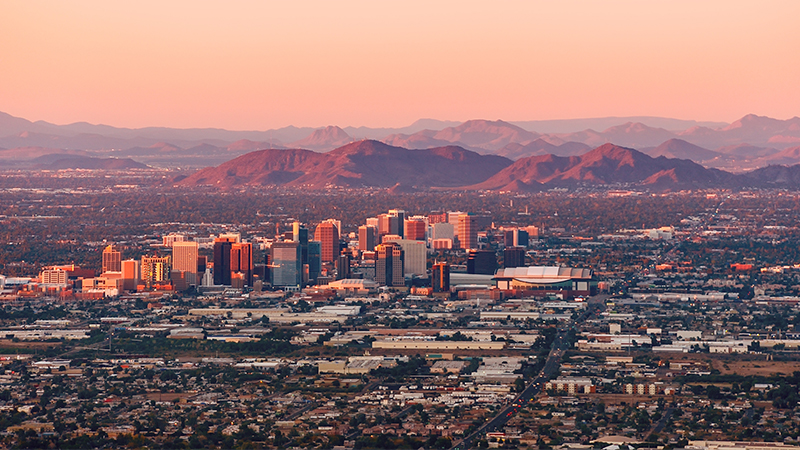These are not your father’s second- and third-tier markets. Today they are experiencing explosive population growth, they are home to a well-educated job force, new technology is changing the industry and capital is coming off the sidelines.
An examination of office and industrial properties at Commercial Real Estate Conference 2016 offered a look at what second- and third-tier markets are experiencing the best job growth and which companies are the primary forces behind this.
The discussion points included what’s driving the influx of people to these regions, what are the most liquid second- and third-tier capital markets, where do these markets stand in the office and industrial cycle, and what is the long-term and multi-cycle potential for office and industrial owners.
Moderator Ron Genovese, executive vice president with Avison Young, has been a part of the Arizona commercial real estate industry for decades. In identifying Phoenix as one of the up-and-coming second-tier markets, he said: “Just look around. Where we are today used to be the Sonoran Desert. But with explosive job growth and technology jobs, things have changed so much.”
What are the primary forces behind this growth? In defining second- and third-tier markets, the panelists shed light on eight factors in office and seven in industrial. These included affordable cost of living, metropolitan population, a robust airport, an educated workforce, a growing tech job sector, higher education, a good political environment, strategic location and a highly developed freeway system.
Other cities such as Atlanta, Dallas, Austin, and Denver are all experiencing this growth.
“The best second-tier cities for office are those in the Sunbelt,” said Jason Bates, executive vice president and chief investment officer, Parkway Properties. “They enjoy a low tax environment, good infrastructure, and rapid population growth. And that should continue for at least another 10 years.”
On the industrial side, new industries to these areas are helping drive the growth. In Phoenix, according to Mark Singerman, vice president, The Rockefeller Group, aerospace and surprisingly the auto industry are two such new industries.
“We have seen a real evolution in these types of jobs migrating to Phoenix,” Singerman said. “It’s just becoming aware to people that we have a huge aerospace and auto industry. We have seen not only the migration of lots of jobs here, but higher paying jobs. State Farm, for example, chose Phoenix for a regional campus because of its proximity to Arizona State University and educated workers.”
According to the panelists, what these second- and third-tier markets are starting to see is spill over from primary markets such as San Francisco, Seattle, Houston, and New York. Companies such as Facebook, Boeing and Amazon are expanding into markets that are heavily oriented toward tech uses.
So where in the cycle are the second- and third-tier markets? According to Stone, office is in the sixth inning of the cycle. On the industrial side, Singerman says it’s been a very long sixth inning, although fundamentals are good.
“This is a tremendous time to be in the Sunbelt,” he said. “The area is exhibiting rent growth, capital is coming back, development opportunities are coming, and there is a trend to start building again.”
Which cities have the most long-term/multi-cycle opportunities? Panelists again agreed on the “fab five:” Atlanta, Austin, Dallas, Denver and Phoenix. Employers want to be there, the panelists agreed. And all of them have a long, successful road ahead.
 This post is brought to you by JLL, the Social Media and Conference Blog sponsor of NAIOP’s Commercial Real Estate Conference 2016. Learn more about JLL at www.us.jll.com or www.jll.ca.
This post is brought to you by JLL, the Social Media and Conference Blog sponsor of NAIOP’s Commercial Real Estate Conference 2016. Learn more about JLL at www.us.jll.com or www.jll.ca.














